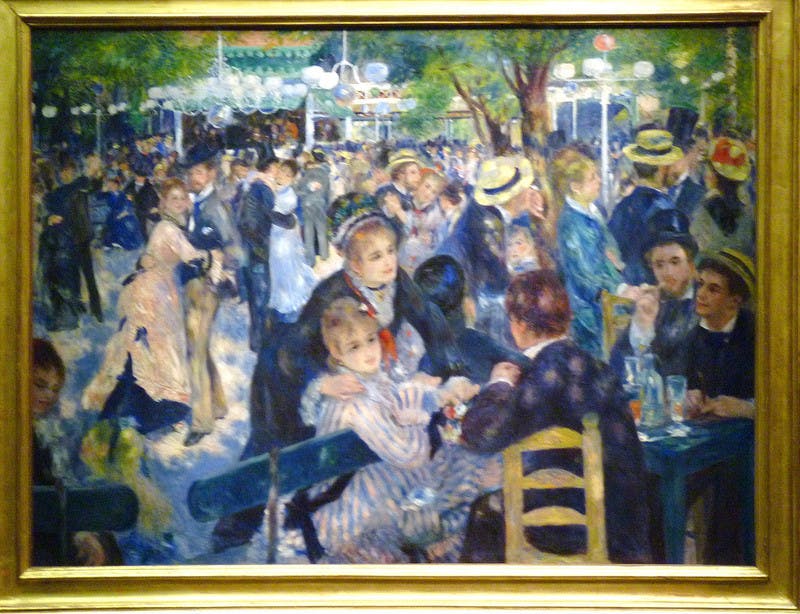Musement unveils five legends and lesser-known stories about this beloved Paris neighborhood.
A maze of narrow streets and stairways, Montmartre is a true symbol of romantic and bohemian Paris where you can walk in the footsteps of famous artists and whimsical characters.
Here’s a look at five legends and lesser-known stories that have helped shape this urban village into the special neighborhood it is today.
1. The Maquis of Montmartre was once a slum
Montmartre was not always the charming little bohemian neighborhood we know and love today. From the Roman era to 1860, Montmartre was a wasteland comprised of an important gypsum quarry and some fields. In fact, most of Paris’ monuments and buildings were built with plaster from this quarry. Annexed to Paris in 1860 at a very low cost, Montmartre quickly became a haven for bandits as well as a refuge for artists, the less fortunate and Parisians who could not afford the ever-increasing cost of living in Paris. Thirty years later, this slum became known as Le Maquis de Montmartre. At the beginning of the twentieth century, real estate developers monopolized the area and created Avenue Junot, transforming Montmartre into a luxurious district, without, thankfully, destroying its bohemian soul.
2. The Mills of Montmartre
At 420-feet high, the hill of Montmartre was the ideal place for Moulins à Vent. From the sixteenth to eighteenth centuries, many of these hilltop mills were used for harvesting and meat grinding, but also to grind plaster from the quarry. Today everyone is familiar with the Moulin Rouge and its history as well as the famous Moulin de la Galette and its guinguette immortalized byAuguste Renoir in 1876. The Moulin de la Galette complex included the Blute-fin and the Radet, the only two windmills that remain in Montmartre today.

Renoir’s celebrated le Moulin de la Galette.Photo credit: damiandude on Visualhunt / CC BY-NC
3. The Saint-Denis fountain or the founding myth of Montmartre
In the third century, a young bishop, Denis, was sent to Lutèce (as Paris was then called) to evangelize this part of Gaul. The Romans sentenced him to death on the hill where Montmartre stands today. Following his decapitation, the bishop is said to have walked for six kilometers with his head in his hands. He washed up at a fountain before collapsing a few meters further, where the Basilica of Saint-Denis was later built. The martyr’s legend is tied to the founding of Montmartre, which takes its name from Monts martyrum, in other words, Monts des martyrs or hill of martyrs. The fountain of Saint-Denis is on Montmartre’s rue Girardon in Suzanne Buisson Square.
4. The Basilica of the Sacred Heart becomes whiter every year
Have you ever noticed that the famous Basilica of the Sacred Heart seems to become whiter every year? This is not due to a regular cleaning schedule, but rather because the church was constructed with seemingly magical rocks from a quarry at Château-Landon in Seine-et-Marne. When it rains, the stone secretes calcite which acts as a self-cleaning substance for the big meringue. But don’t just admire the basilica from the outside…the inside is well worth a visit, too! The superb mosaic, the largest in France, is, in fact, one of the largest in the world.

The Basilica of the Sacred Heart
5. The witch’s rock
Did you know that there is a shortcut between Lepic Street and Junot Avenue? A shortcut that only the most valiant will brave: the witch’s passage in which a rock, known as the witch’s rock, sits. No one really knows where it came from as a geological survey concluded that the stone is not local; some even claim it is a meteorite. This last vestige of the Maquis of Montmartre has been the topic of much conversation over the years but the local children still refer to it as the evil witch’s rock. Once upon a time, an old woman lived alone in a big house nearby, and the children called her the witch. The rock was, in fact, an ancient water source and the passage was nicknamed passage de la sourcière (passage of the source), which is similar to sorcière, the French word for witch. The children’s imagination took flight changing the name to passage de la sourcière (witch’s passage) and thus the rock became known as the “witch’s rock”.
